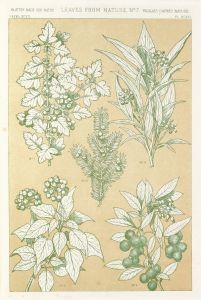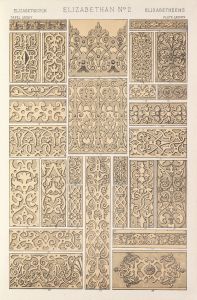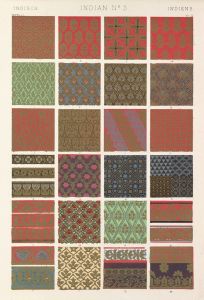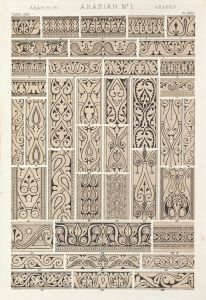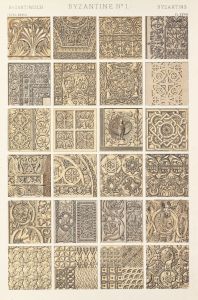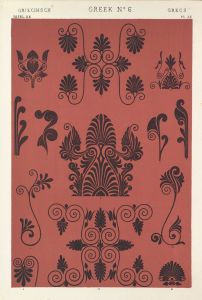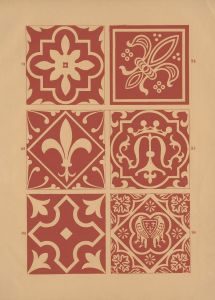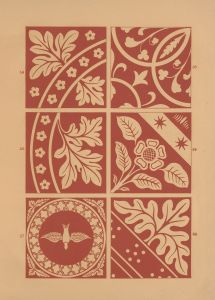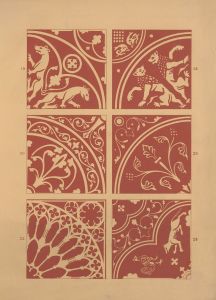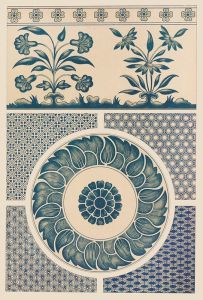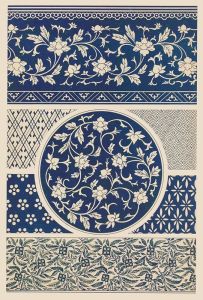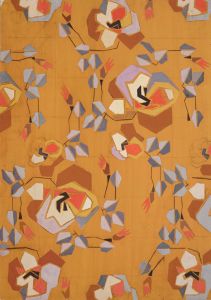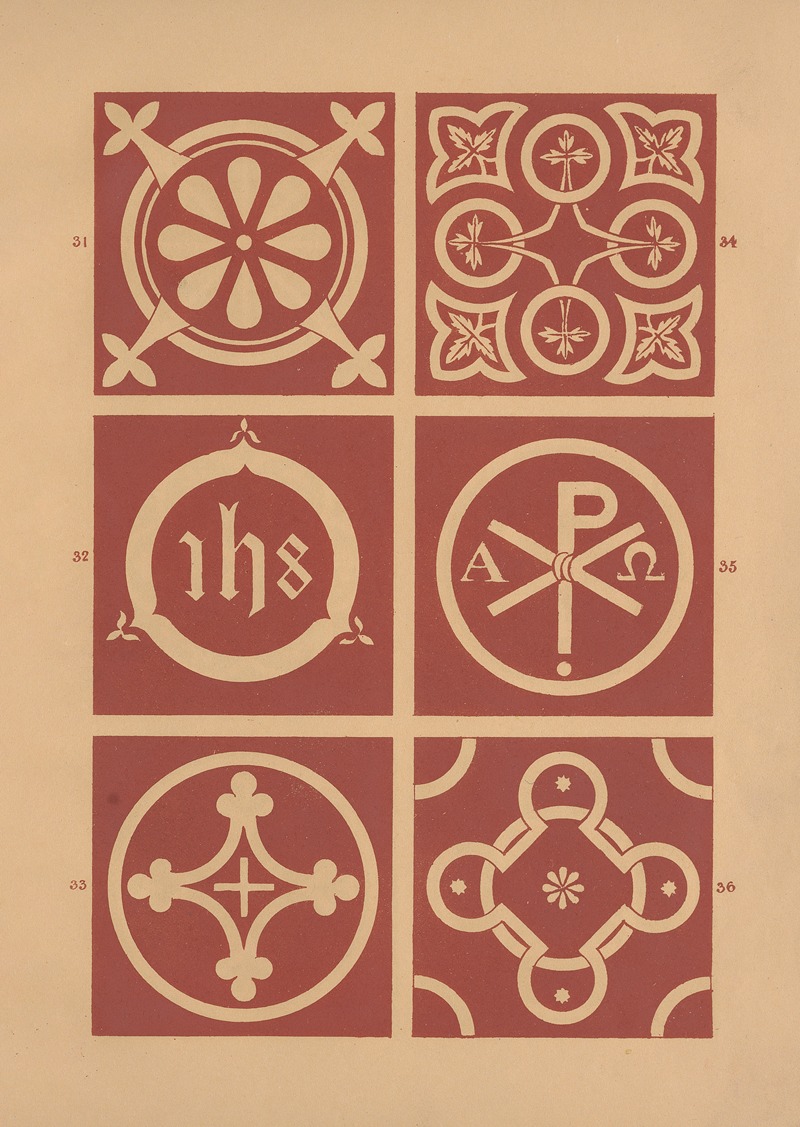
Examples of encaustic tiles Pl.05
A hand-painted replica of Owen Jones’s masterpiece Examples of encaustic tiles Pl.05, meticulously crafted by professional artists to capture the true essence of the original. Each piece is created with museum-quality canvas and rare mineral pigments, carefully painted by experienced artists with delicate brushstrokes and rich, layered colors to perfectly recreate the texture of the original artwork. Unlike machine-printed reproductions, this hand-painted version brings the painting to life, infused with the artist’s emotions and skill in every stroke. Whether for personal collection or home decoration, it instantly elevates the artistic atmosphere of any space.
"Examples of Encaustic Tiles Pl.05" is a notable work by Owen Jones, a prominent British architect and designer of the 19th century. Owen Jones is best known for his influential publication "The Grammar of Ornament," which was first published in 1856. This comprehensive work is a key reference in the study of decorative arts and design, and it includes a wide array of plates illustrating various styles and patterns from different cultures and historical periods.
The plate "Examples of Encaustic Tiles Pl.05" is part of this seminal book. Encaustic tiles are ceramic tiles that feature intricate patterns and designs created by using different colors of clay inlaid into the surface of the tile before firing. This technique was particularly popular during the medieval period and saw a revival in the 19th century, especially in Victorian England.
Owen Jones's work in "The Grammar of Ornament" aimed to document and categorize the vast array of decorative styles from around the world, providing a valuable resource for designers and architects. Plate 05 specifically showcases the beauty and complexity of encaustic tile designs, which were used extensively in both secular and ecclesiastical buildings during the Victorian era. These tiles were prized for their durability and the richness of their colors, which did not fade over time.
Jones's illustrations in "The Grammar of Ornament" are known for their precision and attention to detail. Each plate, including "Examples of Encaustic Tiles Pl.05," is meticulously drawn and colored, reflecting Jones's commitment to accuracy and his deep appreciation for the artistry of the designs he was documenting. The plate features a variety of patterns, each demonstrating the geometric precision and vibrant color schemes characteristic of encaustic tiles.
The revival of encaustic tiles in the 19th century was part of a broader movement that looked to the past for inspiration, a hallmark of the Gothic Revival style. This movement was characterized by a renewed interest in medieval art and architecture, and encaustic tiles were seen as an authentic way to bring the aesthetic of the Middle Ages into contemporary design. Owen Jones's work played a significant role in this revival, as his detailed studies and publications helped to popularize these historical styles among modern designers and architects.
In summary, "Examples of Encaustic Tiles Pl.05" by Owen Jones is an important illustration within "The Grammar of Ornament," showcasing the intricate and colorful designs of encaustic tiles. This plate not only highlights the technical skill involved in creating these tiles but also reflects the broader 19th-century interest in historical design and the revival of medieval artistic techniques. Through his work, Jones provided an invaluable resource that continues to influence the fields of design and architecture to this day.





